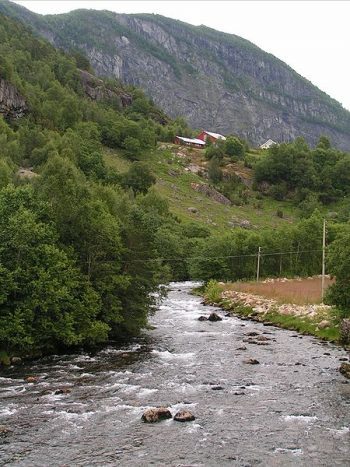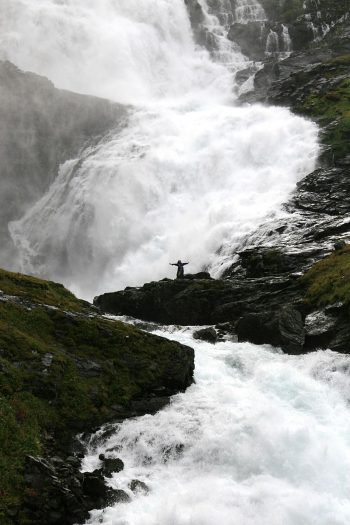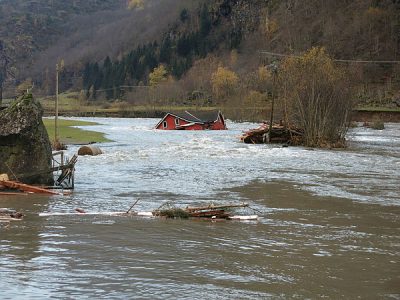Rising demand for electricity and its record-high rates this winter are suddenly prompting Norwegian politicians to consider sacrificing even protected rivers and waterfalls for energy relief. On Wednesday a majority emerged in Parliament to reconsider longstanding conservation measures, and allow more production of hydroelectric power.

Newspaper Klassekampen reported late last week that the Labour Party has agreed with its government partner, the Center Party, to evaluate using more waterways for new hydroelectric projects. It’s a stunning development, since such projects sparked some of the biggest conflicts and civil disobedience in Norway since World War II. Industry and investors were pitted against environmentalists and indigenous groups, especially at Alta in Northern Norway. It ended with some projects being allowed or modified in return for conservation orders that halted others. Nearly 400 of Norway’s waterways are now either fully or partially protected by such orders. That’s made it impossible to harness their waterfalls, construct dams or otherwise develop power plants along their routes.
Until now. Plans to electrify everything from transport to oil platforms (as a means of cutting emissions and meeting climate goals) present huge demand for electricity that’s already at least twice as expensive as it was last year. The government has agreed to compensate Norwegian households for their bills this winter, but most agree that electricity supplies must be boosted to meet demand now and in the future at more reasonable rates, even if only offshore wind energy is used to electrify oil platforms.
‘Natural’ to discuss new hydroelectric projects
The rural-oriented Center Party has long claimed that it’s “natural” to discuss and possibly reconsider the conservation of protected waterways, with an eye to power production. Center’s energy policy spokesman Ole André Myhrvold thinks the discussion should be part of the mandate for a new state energy commission charged with finding ways of meeting energy demands.
The conservative Progress Party has also supported development of protected waterways, and Klassekampen quoted Labour MP Terje Aasland as warming up to the idea. Aasland, who leads the Parliament’s energy and environmental committee, thinks new technology may make it easier to develop hydroelectric power plants along waterways “in a more careful manner” than before. Both Center and Labour, meanwhile, oppose developing more cables that can export Norway’s hydroelectric power abroad, exposing it to market forces and further driving up rates.
“We need more electricity, there’s no doubt about that,” Aasland told Klassekampen. “In connection with the energy commission’s work, it would be natural to discuss how we can get more out of existing hydroelectric power plants, but also whether it’s possible to build out more of the waterways that have been protected.”
Labour’s consent to its new government partner’s proposal was swiftly blasted by MP Lars Haltbrekken, a former leader of Norway’s chapter of Friends of the Earth and a leading Norwegian environmentalist. Both Haltbrekken and the rest of his Socialist Party (SV) firmly oppose launching any new power projects around protected waterways.

“Norway’s waterways and nature are unique in the world,” Haltbrekken said, stressing all the major environmental conflicts over hydroelectric projects that raged in earlier years. “We have an international responsibility to maintain their protection.” Haltbrekken added that “not a single one” of the 390 now protected should be developed.
SV’s commitment to environmental protection, along with support from the other left-wing Reds and Greens parties, would have made it difficult for Labour and Center to win a majority in Parliament. A united far-left could have overruled any support from Progress, and SV has already proposed reversing much of the deregulation of the electricity market that has ushered in high rates in line with international energy prices. “We have to regain greater democratic control over our energy resources in Norway,” Haltbrekken claimed last month.
On Wednesday, however, the Conservatives also declared support for “careful,” even “gentle” power production along some of the protected waterways. MP Nikolai Astrup of the Conservatives said his party would return to Parliament with its own “concrete proposals” and which waterways may be targeted. The conservation orders around them “can often be several decades old, and new technology has come a long way since then,” Astrup said, echoing Aasland of the rival Labour Party.

Astrup and some Center Party politicians have also suggested that at least portions of some waterways prone to flooding could be among the candidates. Jenny Følling, the Center Party’s mayor of Sunnfjord, told Klassekampen last week that developing hydroelectric power from the flood-prone river Flåmsvi in Sogn, for example, could solve two problems at the same time.
“We could end flooding and get more electricity,” Følling said. She wasn’t as keen about targeting Norway’s largest protected waterway, the Gaula River through Gaular in her own home district, though. It’s been the site of conflicts earlier, she noted, adding that “perhaps one of the most controversial projects isn’t the best place to begin” with new hydroelectric projects.
With opposition still running high to more wind-power projects on land, Norway’s waterways have thus rushed back into the spotlight. “We think there’s much less impact on the environment from hydroelectric plants along our waterways,” Frank Sve of the Progress Party told Klassekampen. Progress actively backed local protests against construction of wind turbines in their areas during the last election campaign. A new survey conducted for the paper by research firm Norfakta showed that fully half of those questioned oppose wind energy projects, while only 37 percent were in favour and the remaining 13 percent were undecided.
“We are ready to support the (Labour-Center) government’s proposal for more hydroelectric projects under certain conditions,” said the Conservatives’ energy policy spokesman Bård Ludvig Thorheim on Wednesday. Their former government partner, the Liberal Party, has, however, joined SV, the Greens and the Reds in opposing more development of Norway’s waterfalls and rivers.
“We’re in the middle of a nature crisis, not just a climate crisis,” declared Alfred Bjørlo of the Liberals, scoffing at claims that any development along rivers could be “delicate,” or that modern technology could ensure that.
“‘Delicate’ hydroelectric production doesn’t exist,” agreed Natalia Antonia Golis of the Greens. SV’s Birgit Oline Kjerstad said supporting such projects was out of the question, as it is also for the Reds.
Environmental organizations were also raising alarms, so new major battles loom. “This is frightening, and ignores history,” claimed Truls Gulowsen of Naturvernforbundet (Friends of the Earth). “Seven of our 10 highest waterfalls have already been developed. That’s more than enough.”
newsinenglish.no/Nina Berglund

